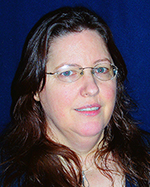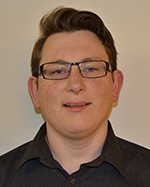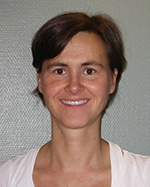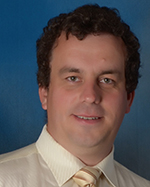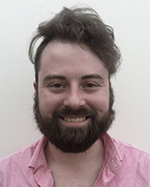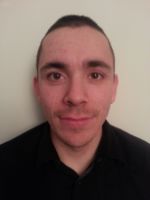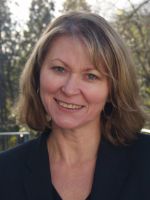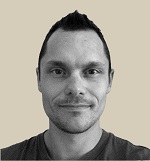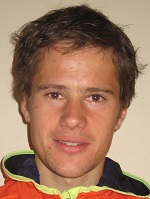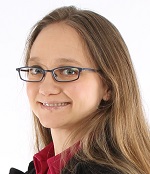Tidligere arrangementer - Side 31
M.Sc. Teresa Lynne Palmer ved Fysisk institutt vil forsvare sin avhandling for graden ph.d: "Heavy Meson Decays with Soft Gluon Effects"
Master of Science Bernt Jørgen Nordbotten ved Fysisk institutt vil forsvare sin avhandling for graden ph.d: "Advances in Bioimpedance Technology"
"Effekter av substitusjon i katodematerialer for litiumionebatteri"
Olav Syljuåsen, UiO
Quantum mechanics predicts that a particle in a periodic potential will oscillate when a constant force acts on it. The oscillation pattern is rather unusual from a classical point of view as it is the external force which determines its frequency and amplitude. Such Bloch oscillations were for a long time controversial, and it took about sixty years until they were finally observed in semiconductor superlattices. In this talk I will discuss the possibility of observing Bloch oscillations in magnetic materials. In particular I will focus on neutron signatures of Bloch oscillations in one-dimensional anisotropic ferromagnets.
Discrimination of artery and bile duct using monopolar bioimpedance measurements
Liliana Velasco-Sevilla, Universität Hamburg
The Standard Model (SM) has successfully described most part of the interactions of elementary particles, however it has many free parameters, most of them related to the masses and the mixing of its fermions. The Higgs mechanism explains the existence the SM fermion masses, but it does not explain the mass spectrum, the mixing pattern and the number of generations of matter. These three last issues are collectively known as the flavour problem and the Charge-Parity (CP) violation is known as the CP problem.
Flavour and CP observables constrain severely extensions of the SM. However, this is a chance to test mechanisms that could solve flavour and CP issues and which may be only realizable in supersymmetry or other extensions of the SM. Then, I will review recent flavour and CP observations. In the third part, I will talk about the possibilities to solve these problems in supersymmetry. Finally, I will mention perspectives to identify signatures of the supersymmetric flavour violating parameters from experiments at the LHC.
"Comparative investigations of zeolite catalyst deactivation by coking in the conversion of methanol to hydrocarbons"
Bryan Zaldivar, Université Libre de Bruxelles
This talk is about mechanisms to generate the observed Dark Matter abundance, which has not been in thermal equilibrium with the radiation plasma in the early universe. They are complementary to the standard "WIMP" paradigm. Special focus on the inflationary reheating period is given. Finally, some thoughts about possible implications of primordial gravitational waves's measurements on Dark Matter are presented.
Parampreet Singh Walia, UiO
The cosmological predictions of the angular power spectrum and structure formation are dependent on the chosen initial conditions of perturbations at early radiation dominated epoch. I will start by introducing the general mathematically possible initial conditions for scalar perturbations. Single field inflationary models produce Adiabatic initial conditions and the current CMB data strongly supports adiabatic initial conditions. With multi-field inflationary models one can produce isocurvature perturbations. A signal for isocurvature perturbations is of high importance for particle physicists as they predict the existence of exotic particles like axions and curvatons. I would present my work on trying to find an evidence for a (possibly) correlated adiabatic and isocurvature mode. The CMB datasets used for constraining models are WMAP9, QUaD and ACBAR. In the end, I would discuss the current status of isocurvature perturbations after PLANCK.
Cand. scient Ingrid Helen Ryste Hauge ved Fysisk institutt vil forsvare sin avhandling for graden ph.d: "Technical quality control in the Norwegian Breast Cancer Screening Program with focus on radiation doses"
Christoph Weniger, University of Amsterdam
One of the major challenges of astroparticle research is to uncover the particle nature of dark matter. Weakly interacting massive particles (WIMPs) are the most popular candidates and currently scrutinized by a large number of experiments. In particular indirect searches for the self-annihilation products of WIMPs in the gamma- and cosmic-ray sky are a promising avenue to follow. I will discuss different techniques that aim at an identification of a dark matter contribution over the astrophysical background, recent claims for dark matter signals in the Fermi LAT data, and challenges for future experiments.
Francesca Calore, University of Amsterdam
Discovering Dark Matter (DM) interactions with ordinary matter, other than gravity, is the current challenge of DM detection experiments. Notably, the indirect detection looks for the final stable products of DM annihilation as rare components of cosmic rays.
For typical DM WIMP candidates the two-body annihilation rate today is suppressed because of helicity arguments. Luckily, the emission of an additional vector boson in the final state may play an important role in enhancing the discovery potential of this particularly well motivated DM candidate with current and future gamma-rays experiments.
I will show how the sharp spectral features at the high energy end of the gamma-ray spectrum induced by electromagnetic corrections can be promisingly looked for with gamma-ray telescopes.
I will then demonstrate that also electroweak bremsstrahlung, whose first fully general calculation in the framework of the Minimal Supersymmetric Standard Model (MSSM) I will present, might alter significantly the energy spectra of gamma rays and imply an annihilation into three-body final states at a rate several orders of magnitude above the tree-level result.
Joakim Bergli, UiO
Maxwell's demon was invented almost 150 years ago to illustrate the statistical nature of thermodynamics. Since then, it has stimulated new ideas about the interplay of entropy and information, with new elements entering the discussion even up to the present. I will summarize key ideas which are relevant and then discuss recent work on the possibility of creating a Maxwell demon in nanoelectronic devices.
Leap Motion + Kinect: An optical 3D multi-sensor solution for HCI
"Termoelektriske materialer: Schottky barriere i Cu/ZnSb-overgang"
Time evolution of magnetic Bloch oscillations using TEBD
Investigation of defect properties of Li in ZnO - A first-principles study of vibrational frequencies, transition rates and diffusion profiles of Li and Li-complexes in ZnO
Candidate of Science in Physics and Mathematics Sergey Shinkevich ved Fysisk institutt vil forsvare sin avhandling for graden ph.d: "Quantum Magnetism at High Resolution"
A Numerical Study of Random Close Packing Models of Granular Systems
M.Sc. Fredrik Sydow Hage ved Fysisk institutt vil forsvare sin avhandling for graden ph.d: "The electronic structure and morphology of carbon fullerene nano-cones: an electron energy loss spectroscopy study"
M.Sc. Tord Hompland vil forsvare sin avhandling for graden dr. philos: “Functional Magnetic Resonance Imaging of the Microenvironment and Microenvironment-Associated Metastatic Potential of Tumors” ved Fysisk institutt.
M.Sc. Jørn Eirik Olsen ved Fysisk institutt vil forsvare sin avhandling for graden ph.d.: "Synthesis, crystal structure and thermal properties of borohydride compounds".
Cand. Scient. Helén Heyerdahl ved Fysisk institutt vil forsvare sin avhandling for graden ph.d: “Targeted therapy of cancer with alpha-emitting radioimmunoconjugate 227th-trastuzumab: Pre-clinical investigations in breast and ovarian cancer models”
Investigation of the compound layer and diffusion zone of pulsed plasma nitrided 51CrV4-steel.
Open seminar on “Thermoelectric power generators” by Prof. Anke Weidenkaff
Hvem får Nobelprisen i fysikk 2013? Vi spekulerer i om vinneren har noe med oppdagelsen av Higgsbosonet å gjøre... Og ser annonseringen fra Stockholm.
M. Sc. Henrik Mauroy ved Fysisk institutt vil forsvare sin avhandling for graden ph.d: “Functional polymers with embedded nanoparticles”
M.Sc. Eirik Gramstad ved Fysisk institutt vil forsvare sin avhandling for graden ph.d:”Searches for Supersymmetry in di-lepton Final States with the ATLAS Detector at √s = 7 TeV”
What auroral and geomagnetic observations tell us about long term variations of the sun.
Seminar with Mike Lockwood
Ruddlesden-Popper type phases in the Ln-Sr-Fe-O (Ln=La, Nd;n=3) system - Synthesis & Characterization
A study of niobium-doped titanium dioxide as viable material for water photocatalysis
A Measurement System For Attitude Determination on Sounding Rockets
Biologisk MR-veiledet stråleterapi av hypoksisk livmorhalskreft
Solar Heating in Norwegian Passive Houses. A Case Study of two Passive Houses Heated by Solar Collectors and Heat Pump.
Dr. Luiza Angheluta, candidate for an associate professor in physics of geological processes, will hold a trial lecture.
The 10th Conference of the European Science Education Research Association. ESERA2013 will take place at the University of Cyprus
The 2nd International Conference on New Frontiers in Physics (ICNFP2013) will be held 27.08-06.09.2013 in OAC, Kolymbari, Crete.
Two candidates for associate professor in semiconductor physics will hold an open trial lecture on electromagnetics.
M.Sc. Gry Merete Tveten ved Fysisk institutt vil forsvare sin avhandling for graden ph.d: "Developments for studies of the extremes of nuclear matter"
Elaboration of a laser doped selective emitter for crystalline silicon solar cells
International Conference on Physics Education, ICPE 2013
The purpose of the ICPE 2013 is to bring together people working in physics educational research and in physics education at all types of schools from the whole world to enable us to share and exchange our experience.
